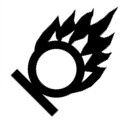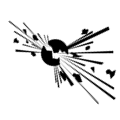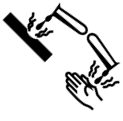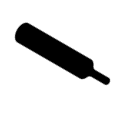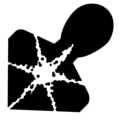After the US Occupational Safety and Health Administration (OSHA) released the new Hazard Communication Standard (HCS) regulations on May 20, 2024, it has become crucial to understand what precautions and new changes there are in the US hazardous chemical labels.
This article covers the elements that labels for a hazardous chemical in the United States must contain:
1) Product identifier
The product identifier refers to the name or number (e.g., chemical name, code number, or batch number) used for a hazardous chemical on a label or in the SDS. It provides a unique means by which the user can identify the chemical. The product identifier used must permit cross references to be made among the list of hazardous chemicals required in the written hazard communication program, the label, and the SDS. It should be noted that the product identifier on the label must be consistent with that in the SDS.
2) Signal word
A signal word means a word used to indicate the relative level of severity of a hazard and alert the reader to a potential hazard on the label. The signal words used in HCS are "danger" and "warning". Danger is used for the more severe hazards, while warning is used for the less severe. If the signal word Danger is included, the signal word Warning must not appear.
3) Hazard statement(s)
The text of all applicable hazard statements must appear on the label, except as otherwise specified. The information in italics shall be included as part of the hazard statement as provided. For example: ‘‘causes damage to organs (state all organs affected) through prolonged or repeated exposure (state route of exposure if no other routes of exposure cause the hazard)’’. Hazard statements may be combined where appropriate to reduce the information on the label and improve readability, as long as all of the hazards are conveyed as required.
If the chemical manufacturer, importer, or responsible party can demonstrate that all or part of the hazard statement is inappropriate to a specific substance or mixture, the corresponding statement may be omitted from the label.
4) Precautionary statement(s)
A precautionary statement means a phrase that describes recommended measures that should be taken to minimize or prevent adverse effects resulting from exposure to a hazardous chemical, or improper storage or handling.
5) Pictogram(s)
A pictogram is a composition that may include a symbol plus other graphic elements, such as a border, background pattern, or color, that is intended to convey specific information about the hazards of a chemical. Eight pictograms are designated under this standard for application to a hazard category. Although there are nine GHS pictograms, OSHA only specifies eight, among which environmental pictograms are not mandatory.
Pictograms shall be in the shape of a square set at a point and shall include a black hazard symbol on a white background (Figure 1) with a red frame sufficiently wide to be clearly visible. A square red frame set at a point without a hazard symbol is not a pictogram and is not permitted on the label.
If the skull and crossbones pictogram is included, the exclamation mark pictogram must not appear where it is used for acute toxicity. If the corrosive pictogram is included, the exclamation mark pictogram must not appear where it is used for skin or eye irritation. If the health hazard pictogram is included for respiratory sensitization, the exclamation mark pictogram must not appear where it is used for skin sensitization or for skin or eye irritation.
Flame | Flame Over Circle | Exclamation Mark | Exploding Bomb |
|
|
|
|
Flammables Self Reactives Pyrophorics Self-heating Emits Flammable Gas Organic Peroxides Desensitized Explosives | Oxidizers | Irritant Dermal Sensitizer Acute Toxicity (harmful) Narcotic Effects Respiratory Tract Irritation HNOC (non-mandatory) | Explosives Self Reactives Organic Peroxides |
Corrosion | Gas Cylinder | Health Hazard | Skull and Crossbones |
|
|
|
|
Corrosives | Gases Under Pressure | Carcinogen Respiratory Sensitizer Reproductive Toxicity Target Organ Toxicity Mutagenicity Aspiration Toxicity | Acute Toxicity (severe) |
Figure 1: Hazard Symbols and Classes
Remark: HNOC is short for Hazards Not Otherwise Classified.
6) Name, US address, and US telephone number of the chemical manufacturer, importer, or other responsible party

Figure 2 Label example
Small container labelling
For a container less than or equal to 100 ml capacity, the chemical manufacturer, importer, or distributor must include, at a minimum, the following information on the label of the container:
(A) Product identifier;
(B) Pictogram(s);
(C) Signal word;
(D) Chemical manufacturer’s name and phone number; and
(E) A statement that the full label information for the hazardous chemical is provided on the immediate outer package.
For a container less than or equal to 3 ml capacity, where the chemical manufacturer, importer, or distributor can demonstrate that any label interferes with the normal use of the container, no label is required, but the container must bear, at a minimum, the product identifier.
All small containers covered above, should use the full label information in the immediate outer package. A statement that the small container(s) inside must be stored in the immediate outer package bearing the complete label when not in use.
Label Updates
(1) Chemical manufacturers, importers, distributors, or employers who become newly aware of any significant information regarding the hazards of a chemical shall revise the labels for the chemical within six months of becoming aware of the new information, and shall ensure that labels on containers of hazardous chemicals shipped after that time contain the new information. For chemicals that have been released for shipment and are awaiting future distribution, chemical manufacturers, importers, distributors, or employers have the option not to relabel those containers; however, if they do not relabel the containers, they must either provide the updated label for each individual container with each shipment or, with the agreement of the receiving entity, transmit the labels by electronic or other technological means.
(2) If the chemical is not currently produced or imported, the chemical manufacturer, importer, distributor, or employer shall add the information to the label before the chemical is shipped or introduced into the workplace again.
Label size
There is no specified minimum size for the labels or pictograms in the US, but the text must be legible, sections separated, and elements must not overlap. Manufacturers or suppliers must put a GHS-compliant label on all primary chemical containers – in other words, the ones used for distribution.
If you need any assistance or have any questions, please get in touch with us via service@cirs-group.com.

